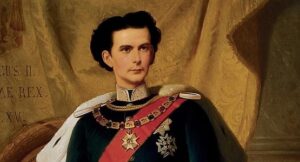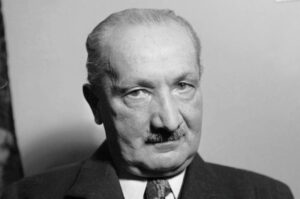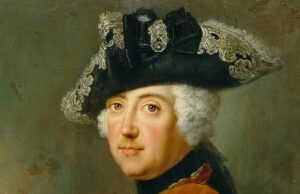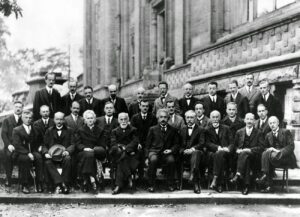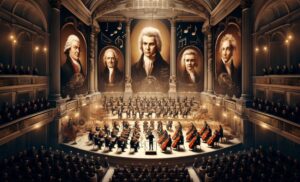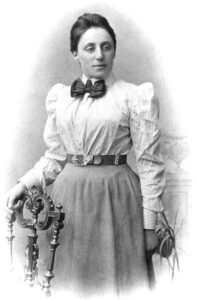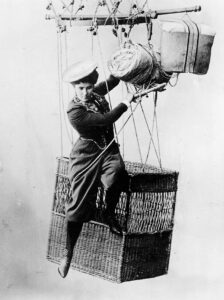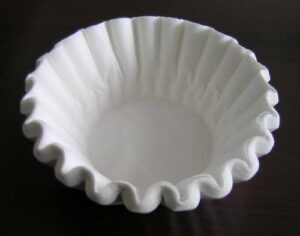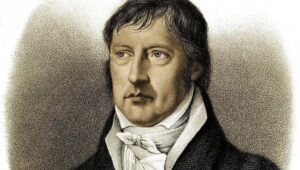Few figures in German history have inspired as much fascination and speculation as King Ludwig II of Bavaria. Known to many as “the Mad King,” Ludwig’s life was marked by eccentricity, extravagant castle building, and a mysterious death that still fuels conspiracy theories today. Yet to reduce him to a caricature is to miss the real story: a … [Read more...]
Martin Heidegger – Being, Time, and the Question of Existence
Martin Heidegger is often called the most influential philosopher of the 20th century - and also one of the most controversial. His work changed the landscape of phenomenology, existentialism, hermeneutics, and postmodern thought. Yet his affiliation with Nazism continues to cast a long shadow over his legacy. Heidegger didn’t just ask what it … [Read more...]
Frederick the Great of Prussia
Few figures in German history cast as long a shadow as Frederick II of Prussia, better known as Frederick the Great. Ruling from 1740 to 1786, he took a modest, militarized kingdom and elevated it to the ranks of Europe’s great powers. Yet Frederick wasn’t just a warrior-king - he was also a musician, philosopher, and patron of the … [Read more...]
How German Philosophy Shaped the Modern World
What do the moral code of your favorite sci-fi series, the foundation of human rights, and the existential crisis you had at 2 a.m. last Thursday all have in common? They’ve all been touched - if not completely inspired - by the profound legacy of German philosophy. German thinkers from the Enlightenment through the 20th century didn't just ask … [Read more...]
Famous German Scientists Who Changed the World (Beyond Einstein!)
When people think of German scientists, Albert Einstein is often the first name that comes to mind. While Einstein’s contributions to physics are monumental, Germany has produced countless other brilliant minds who have shaped the modern world in fields ranging from chemistry and medicine to engineering and quantum mechanics. From … [Read more...]
The German Influence on Classical Music: Composers Who Shaped the World
Classical music owes much of its development to the profound contributions of German composers. The rich musical heritage of Germany has produced some of the most influential and revered figures in the history of classical music. These composers not only shaped the music of their time but also left a lasting legacy that continues to inspire … [Read more...]
Amalie Emmy Noether: The Revolutionary Mathematician Who Changed the World of Physics
Amalie Emmy Noether, born in Erlangen, Germany, on March 23, 1882, stands as a towering figure in the realms of mathematics and physics. Renowned for her pioneering contributions to abstract algebra and theoretical physics, Noether is recognized as one of the pivotal mathematicians of the 20th century. This article explores the life, obstacles, and … [Read more...]
Katharina Paulus: The German Inventor Who Revolutionized Early Aviation
In the annals of aviation history, few names are as pioneering as Katharina Paulus, a German inventor whose ingenuity and courage reshaped the early world of flight. Her remarkable contribution to the development of the parachute not only revolutionized aviation safety but also carved a path for women in a field dominated by men. Early Life and … [Read more...]
Coffee Filter Invention: Melitta Bentz’s Revolution
Coffee, a beverage cherished by millions around the world, owes much of its popularity and convenience to a simple yet ingenious invention: the coffee filter. In this article, we delve into the history, evolution, and impact of the coffee filter, a pivotal innovation in the world of coffee brewing. The Birth of the Coffee Filter: Melitta Bentz’s … [Read more...]
Georg Wilhelm Friedrich Hegel: Philosophy and Influence
Georg Wilhelm Friedrich Hegel (1770–1831) was a German philosopher who profoundly influenced Western thought. His work traversed a wide range of subjects, including philosophy, history, politics, and society. Hegel is best known for his development of dialectical reasoning and absolute idealism, which have had a lasting impact on various … [Read more...]
- 1
- 2
- 3
- …
- 11
- Next Page »
